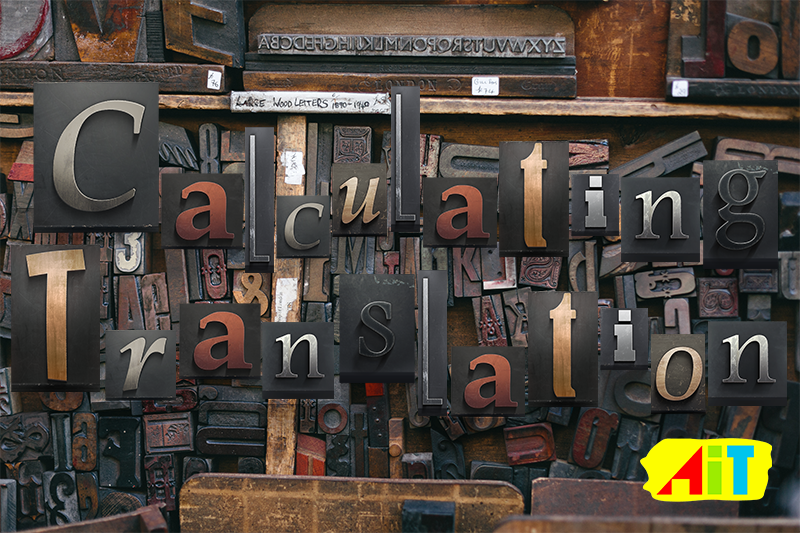22 Nov


I know that you believe that you understood what you think I said,
but I am not sure you realize that what you heard is not what I meant.
Robert J. McCloskey, former State Department spokesperson
Hesitations with regard to how many words or characters a page contains may seem irrelevant. A printed word is similar to a small but rigid structure made of smaller blocks, i.e. characters. A page looks like a body made of molecules in the form of words. In turn, words look like molecules structured with atoms. Characters are able to exchange places or even migrate from one word to another. Elementary physics suggests that nothing comes from nowhere and goes to nowhere. It is very clear and simple. A body is a body and a page is a page. Word counting does not involve any mysticism or metaphysics. Sir Isaac Newton could have acknowledged that.
Assume a customer from, for example, Belgium needs a professional to translate a document from English into Russian. The document contains a hundred pages of plain text. A freelance translator from, for example, Ukraine accepts the order. Both the customer and the translator agreed to charge the work according to the number of characters. What can go wrong?
Seems nothing can. However, the fictional phone conversation scenario below is actually rather likely to occur, demonstrating that troubles may exist even in paradise. It’s not so easy to count the words correctly.
– Customer (slightly disgusted after receiving the finished translation along with an invoice for payment):
“My dear, I’m a little confused about the volume you indicated in the invoice. It differs by about 12% from my own count. Can’t you count the words correctly? Please check it once again keeping in mind that this project is only a trial one. As promised, I can entrust you with another huge work of about 2,000 pages, but only if we can both agree on the word count.”
– Translator (clicking puzzlingly on the Microsoft Word Statistics of the document):
“Sir, I’m checking the word count right now. There are no mistakes. The number is correct. I’ve been working in the translation business since 1995, and I have never cheated on my customers. What counting method did you use to check the volume? I always rely on Microsoft Word Statistics….”
– Customer (crossly hesitating):
“Well, as you downloaded that PDF to Google Drive, I used their count engine. I suppose that’s the reason. Humph…ok, no matter. I will pay in accordance with your data this time. However, I guess we need to employ some joint counting solution for further projects. Right?”
– Translator (taking a deep breath):
“Of course. Don’t worry, I’ll figure something out….”
Wait, what? How come 12% of the characters disappeared? How can elementary physics fail? Has Schrödinger’s cat dragged the characters to the quantum singularity without Sir Isaac Newton’s permission? How to determine who is right or wrong?
Both the customer and the translator are wrong!
Because. They. Both. Use. Amateurish. Tools. This is especially regrettable for the translator. Disregarding the scale of business (from an independent freelancer to large international agencies), professionals must use specialized tools. The advanced and reliable solution should provide them with an ability to perform their job without confusion. In our example, the customer was from Belgium, where they used a standard of 60 keystrokes per line to figure out a text volume. Using such a text count standard involves no further calculations. However, each professional translator must be ready to face a variety of foreign text count standards throughout their practice.
The translator from our example should refer to a professional, advanced, and up-to-date software such as AnyCount, a tried-and-tested solution that adopts a responsible approach to word counting. Using free online word count engines can significantly tarnish the reputation of both professionals and translation agencies alike.
Besides the direct financial losses, the abovementioned misunderstanding could lead to a lapse in credibility and the consequent erosion of market shares, which could, in turn, spell disaster….
So how do you count words correctly? Guided by the principle of never saving on tooling, true professionals can fully rely on the high-tech, comprehensive AnyCount software, leaving the unexplainable word disappearance—along with Schrödinger’s cat—to those who still hesitate to adopt advanced word-count software.

